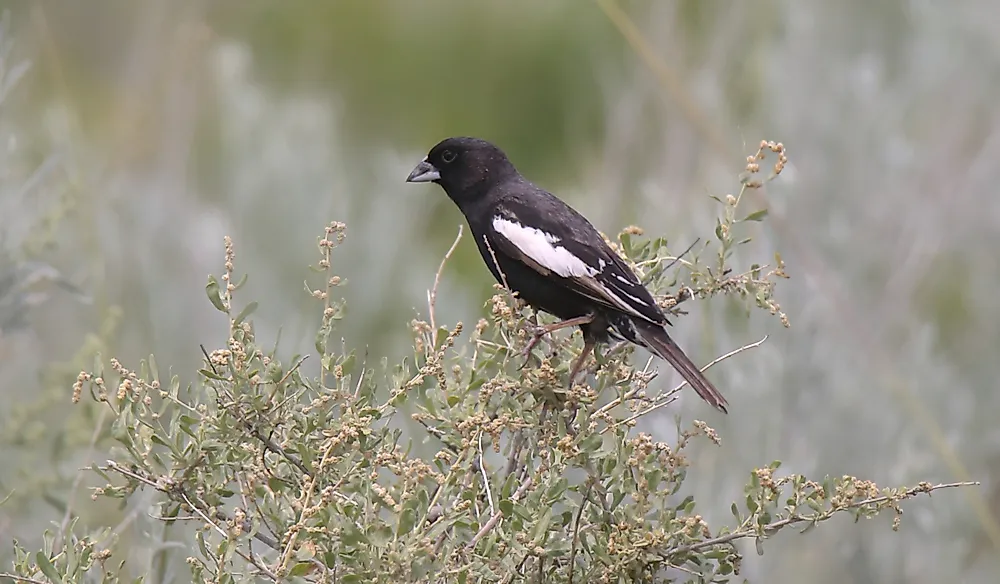What Is The Colorado State Bird?

Colorado is a US state located in the country’s western region. With an area of approximately 104,094 square miles, Colorado ranks as the eighth largest US state in terms of size. Colorado was the 38th state to gain admission to the union, joining on August 1, 1876. As this occurred 100 years after the signing of the Declaration of Independence, Colorado is nicknamed the "Centennial State." In addition to its state flag, Colorado has numerous state symbols, including a state flower (Rocky Mountain columbine), state tree (Colorado blue spruce), state fish (greenback cutthroat trout), and state mammal (Rocky Mountain bighorn sheep). Colorado also has an official state bird: the lark bunting.
State Bird
The official state bird of Colorado is the lark bunting, which is scientifically known as Calamospiza melancorys. The migratory songbird bird was chosen as Colorado's state bird in 1931, primarily because of two of its characteristics: its melodious voice and its courtship. The lark bunting belongs to a group of birds known as the American sparrow. Among sparrows, only males are capable of changing the color of their feathers to a dull gray during winter.
Appearance
The small bird usually grows to a length that ranges between 5 and 7 inches, and males are typically larger than females. The lark bunting has a beak or bill that is usually short, bluish, and thick. Females and non-breeding males have white-striped bodies that are predominantly gray in color. However, breeding males usually have a jet-black body and white wings. A fully-grown lark bunting can have a wingspan of up to 11 inches.
Habitat
Lark buntings prefer to live in western and central parts of North America, particularly in grassland regions. The species builds nests on the ground in places such as below shrubs and in areas with plenty of grass. During the summer, the bird typically inhabits meadows and areas covered with sagebrush, and migrates during the winter season.
Range
The lark bunting is common in the Great Plains, which is why it is classified by the International Union for Conservation of Nature (IUCN) as a species of least concern (LC). However, most birds living in grasslands have experienced a steady decline over the past four decades. For example, in Colorado alone, the population has been decreasing at an annual rate of 2.5% between 1966 and 2003.
Diet
With the exception of nesting season, it is a common see the lark bunting feeding in groups. The small birds search for food on the ground, and feed on insects such as beetles and ants. In the winter, the lark bunting's diet consists primarily of seeds.
Reproduction
Lark buntings have a unique courtship, which consists of an elaborate process of singing and posturing. Singing is usually a sign of a male marking his territory. A female lark bunting chooses a male and lays a clutch of between two and five eggs, which hatch after a period of 10 to 12 days. The female's choice of male varies year to year, which helps to ensure diversity among the population.











